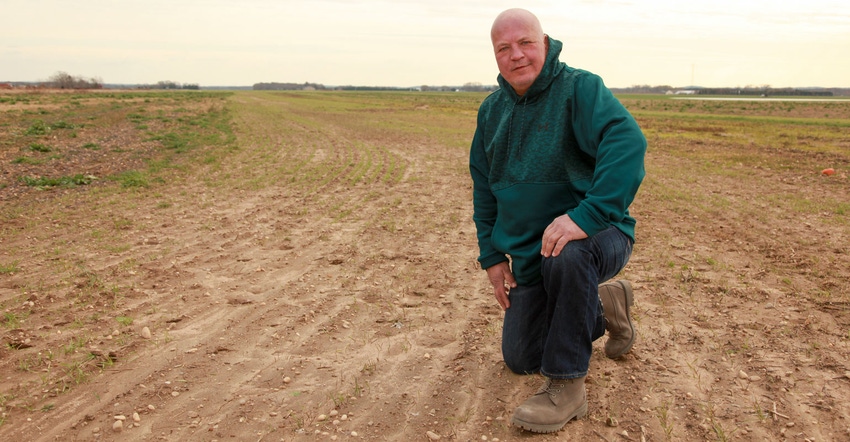March 15, 2019

For Long Island potato grower Allan Zilnicki, using controlled-release nitrogen (CRN) fertilizer on 20 acres of his Riverhead, N.Y., farm represents an intangible benefit well worth the cost.
“It’s the right thing to do,” says the third-generation farmer. Zilnicki’s family has grown potatoes on the North Fork of Long Island for more than 80 years. He wholesales and sells his potatoes in 5-pound bags at the Hunts Point Market.
CRN products generally cost more than conventional nitrogen fertilizer, but “the extra cost is not all that important compared to protecting our water and the land we live on and want to pass on to our children,” Zilnicki says.
Water quality conservation is critical on Long Island, as a sole-source aquifer system is its main freshwater drinking supply.
Slow-release products decrease the risk of nutrient leaching into surface and groundwater while encouraging increased uptake efficiency by crops. A polymer coating encases a nitrogen core that releases slowly over time as soil temperature increases to trigger the diffusion.
“Water liquefies the core and through temperature-controlled diffusion, the urea is metered out into the soil over 90 days or so,” according to Sandra Menasha, vegetable and potato specialist for Cornell Cooperative Extension of Suffolk County. “The coating thickness can be adjusted to increase or decrease the number of days to 90% N release.”
Results on the farm
Use of CRN has received mixed reviews on whether it boosts crop yield.
“The controlled-release N worked the same as conventional fertilizer for the pounds of potatoes produced,” Zilnicki says.
In on-farm trials with other Long Island growers, marketable yield of CRN-grown potatoes increased between 10 to 46 cwt per acre with 6 to 30 pounds less nitrogen per acre. One farm saw no yield difference but reduced nitrogen per acre by 36 pounds. CRN trials at the Long Island Horticultural Research and Extension Center showed potato and sweet corn yields equal to or greater than those achieved with conventional N applications.
“Weather, especially early season rainfall, influences the opportunity for yield gain with CRN,” Menasha says. “When leaching rain events occur in April or May, there is a trend toward increasing yields with CRN over conventional fertilizer applied at the same rate and, therefore, the potential to reduce N rates and cost.”
The research team has also tracked the economic value of CRN use. In on-farm, side-by-side trials of CRN and conventional nitrogen fertilizer over four years, potato and sweet corn growers reported saving $221 an acre, which reduced nitrogen applications by 14%, a net gain of between $101 and $505 an acre without compromising crop or quality.
Pinpointing opportunities
Evaluation on a farm-by-farm basis helps pinpoint opportunities for CRN benefits. Menasha notes: “On-farm trials allow growers to try a practice or product under their specific growing conditions. We recommend trying CRN at a grower’s standard N rate and reducing accordingly after seeing how it works under different conditions on your soils.”
The New York Farm Viability Institute provided Extension with a grant for the CRN work on Long Island. For Zilnicki, the grant-funded research is cost-effective.
“I appreciate Extension reaching out when they have a grant to bring new things to the farm to test before we invest money in something that may or may not be helpful,” he says.
Menasha’s research has also experimented with CRN-conventional N blend applications. She currently suggests blending a 44-0-0 CRN product with a 90-day release profile with approximately 25% soluble N fertilizer for potato production, so 75% of the total N in the blend is CRN.
For more information, contact Menasha at 631-727-7850, ext. 316, or email [email protected].
Dunn writes from her farm in Mannsville, N.Y.
About the Author(s)
You May Also Like




